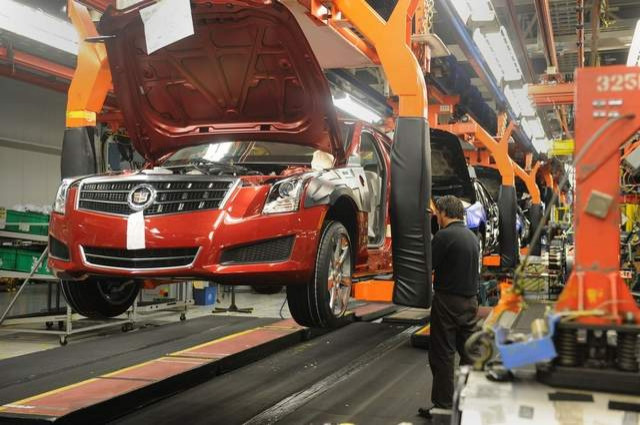US Industrial Production Fell In January On Weak Auto Manufacturing

American industrial production fell in January after two months of solid growth. The momentum was temporarily blunted, because production of autos and auto parts posted a big drop. However, the auto industry is coming off its best year for sales in five years, and economists expect production to rebound in February.
Output at U.S. factories, mines and utilities slipped 0.1 percent last month, figures from the Federal Reserve showed Friday, after gains of 1.4 percent in November and 0.4 percent in December. The median forecast in a Reuters survey called for a 0.2 percent rise.
A steep 3.2 percent drop in motor vehicle assembly contributed to the decline in the headline figure. But the drag will likely be temporary. Cars and light trucks sold at a 15.2 million annual rate in January, down from 15.3 million in December, data from Ward’s Automotive Group showed. Including November’s 15.5 million rate, auto sales over the past three months have been the strongest in five years.
Manufacturing, which makes up 75 percent of total production, fell 0.4 percent in January from December, the Fed said. Economists were expecting a gain of 0.2 percent.
Paul Dales, an economist at Capital Economics, pointed to two reasons why the decline in manufacturing output should not be a source of concern.
First, output was revised up sharply in both December and November. The revised data showed the biggest two-month gain since 1984. This also contributed to the leap in the three-month-on-three-month annualized growth rate in January to 7.2 percent, from 1.9 percent in December.
Second, the forward-looking surveys have continued to improve, including February’s Empire State Index, which rebounded sharply to a nine-month high of 10, from minus 7.8 in January. This suggests that manufacturers are feeling some benefits from the slightly stronger global backdrop.
“Global growth will still be fairly weak this year, which will prevent industry from firing on all cylinders. But there’s no denying that industrial conditions have recently improved,” Dales said in a note to clients.
Capacity utilization -- a measure of how much businesses are using their resources -- declined to 79.1 percent from a four-year high of 79.3 percent in December. Utility output jumped 3.5 percent after falling 4.5 percent the prior month. And mining production, which includes oil drilling, decreased 1 percent after being little changed the prior month.
Separately, a preliminary reading on U.S. consumer sentiment from Reuters and the University of Michigan checked in at 76.3 for February from 73.8 in January, easily topping expectations of 74.
The barometer of current economic conditions rose to 88 from 85, while the gauge of consumer expectations rose to 68.7 from 66.6.
© Copyright IBTimes 2025. All rights reserved.






















